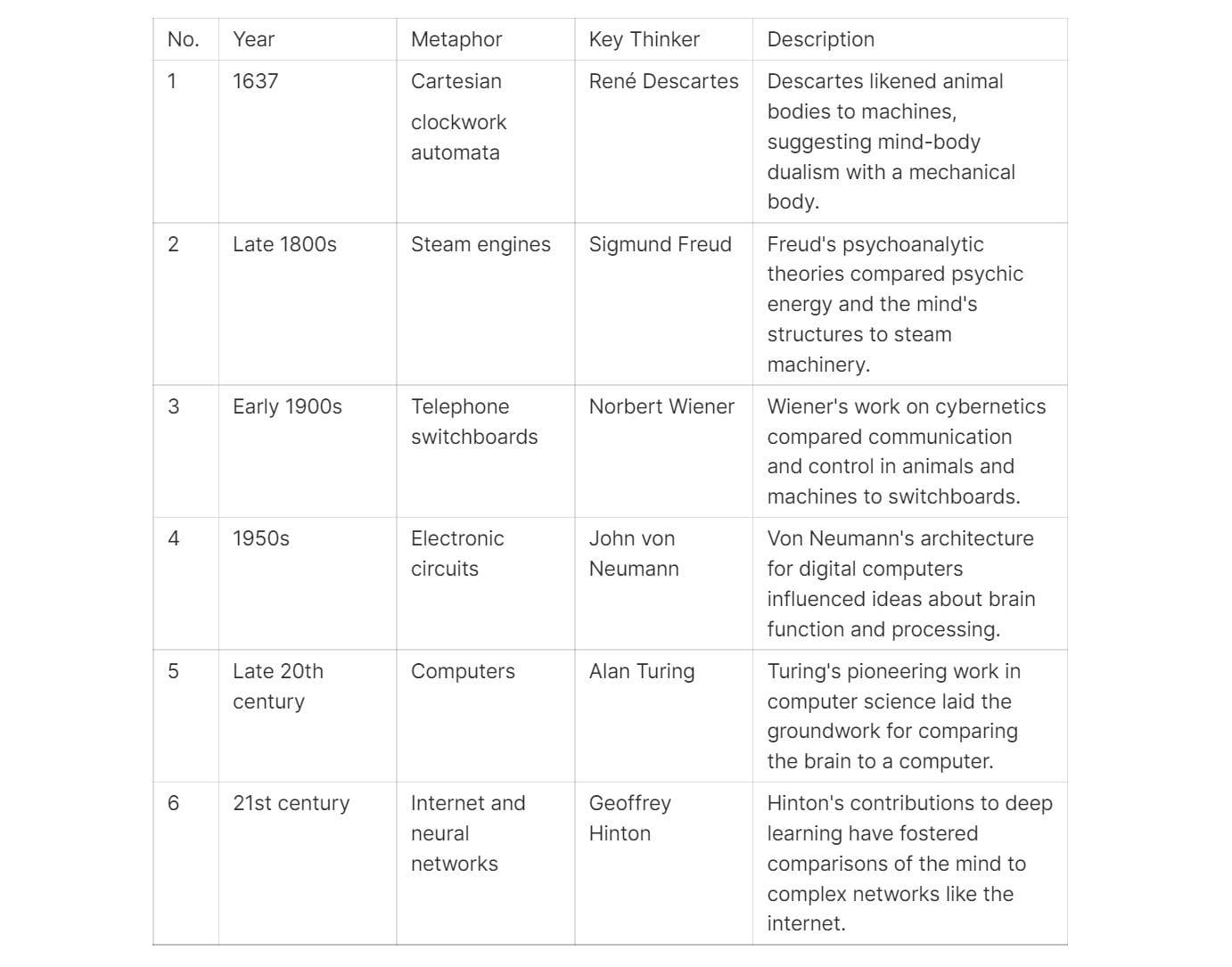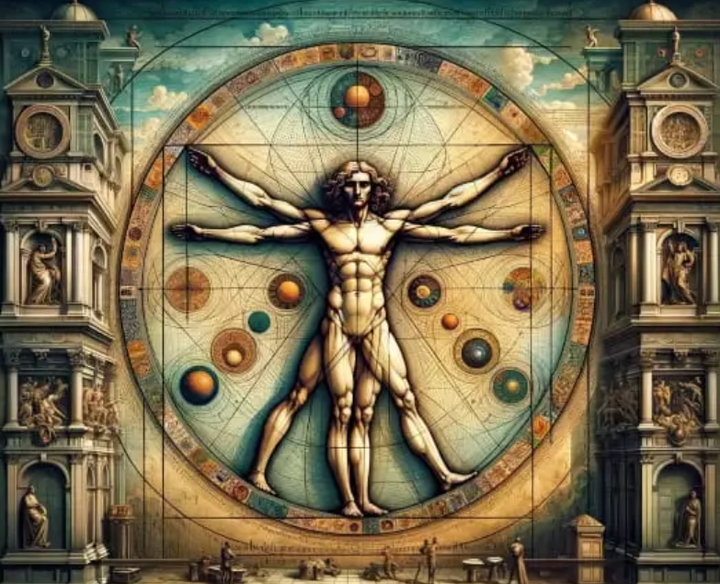We Are Not Machines

Using metaphors: As humans, we love metaphors since they help us make sense of complex ideas.
Metaphors in consciousness studies: Every era of consciousness studies has had its metaphors to help us fathom the perplexity of first-person subjective experience (consciousness). It is the engineer in us that reduces the problem to a particular metaphor and then breaks down its parts. This reductionist view implies that if we understand the mechanics, we understand the whole.

Metaphors illuminate — but don’t mistake them for reality. Looking at the chart, you can see how in each era, metaphors help us understand deeper aspects of what we’re trying to grasp. However, metaphors break down when we take them literally and attempt to make one-to-one correspondences.
Beyond reductionism: Science, particularly biology, is moving beyond the mechanistic metaphor. Living organisms are more than the sum of their parts. They adapt, grow, and develop in ways machines do not. We are seeing a shift towards understanding life as dynamic and interconnected rather than a series of mechanical functions.
Closing thought: History shows us we must be careful with our metaphors. They can aid our understanding and shape our approach to science and life. While metaphors can illuminate, they can also mislead. Recognizing the limitations of the mechanistic metaphors reminds us that humans are complex, conscious beings—not mere machines.


